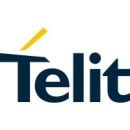Here’s a big number: $1.6 trillion. That’s how much the Internet-of-Things-enabled market could be worth by 2025. As more and more businesses adopt IoT technology, one highly affected area has been the sector of retail. IoT is being used to improve a variety of products and services across the retail and commerce industry — from warehousing and equipment maintenance to supply chain management and, of course, shopping itself.
Top IoT in Retail Examples
- Personalized retail marketing and content delivery.
- Optimal staffing level indicators.
- Cashierless payment systems.
- Movement tracking systems for optimal store setup.
- IoT-enabled warehouse robots.
- Wireless shipment tracking devices.
- Real-time condition monitoring of goods.
- Inventory management tools.
- In-store buyer behavior tracking.
“With the growth of the internet of things, customers will enjoy an increasingly connected or ‘smart’ shopping experience through a network of connections linking the physical and digital worlds into an ecosystem of devices, including vehicles, stores and software,” Walmart CEO Doug McMillon has written. “The internet of things, drones, delivery robots, 3D-printing and self-driving cars will allow retailers to further automate and optimize supply chains too. Both sides of the equation – demand and supply – will change dramatically.”
These retail and retail adjacent sectors are being transformed by the ongoing and ever-evolving IoT revolution.
Smart Stores
By improving the customer experience through digital connectivity and data collection, smart stores help retailers retain business and increase revenues. Theoretically, anyway.
Smart store technology can range from helpful robots that roam the aisles, to automatic inventory monitoring, to point-of-sale systems that let customers skip the checkout line and buy on the spot — all being done to make shopping as hassle-free as possible. This type of automation both reduces the costs of staffing and encourages customers to return to buy more. Check out a few companies making shopping a streamlined process at many U.S. retail locations.
Location: Davis, California
How it’s using IoT in retail: Engage3’s Price Image Management Suite helps retailers determine a pricing strategy by providing competitive price data and product linking capabilities, all on one dashboard. The platform uses machine learning algorithms to determine the best insights on price optimization, track product traffic information and offer DIY in-store and online price auditing.
Location: Aliso Viejo, California
How it’s using IoT in retail: AWM’s SmartShelf is outfitted with edge displays and high-definition optical sensors to display product pricing and information that transmit data about inventory levels. It can also recognize a consumer’s age, gender and ethnicity for the purposes of delivering more specific display content. Some of the product’s retail clients include WalMart, Hershey and Frito Lay.
Location: Denver, Colorado
How it’s using IoT in retail: Flonomics’ counting system and retail analytics technology helps retailers determine optimal staffing levels for different dates and times, improve marketing strategies, gauge traffic flow, enhance customer service and more. A few of Flonomics’ clients include Room & Board, Helly Hansen and Madame Tussaud’s Hollywood.
Connected Customers
Customers like feeling valued when they shop, leading to retail solutions that can be offered by IoT.
When directly connected with a store’s IoT network through a compatible device, customers can be offered personalized deals, assistance finding products and easy checkout, tailoring the buying process to each individual shopper. For businesses too, customers are 40 percent more likely to spend more when a shopping experience is highly personalized. Here are just some of the ways retailers are staying connected and in tune with their customers using IoT technology.
Location: New York, New York
How it’s using IoT in retail: Caper makes a smart self-checkout cart powered by Amazon-Go’s AI, sensor and image recognition technology. Customers simply pick items from shelves, scan the item’s barcode, drop it in the cart, and pay directly on the cart when shopping is done. No app necessary, no cash changes hands, no waiting in line.
Location: San Francisco, California
How it’s using IoT in retail: Using customer data, Plexure’s AI-driven platform helps retailers get the right messages to the right customers at the right times via mobile. The company’s simple interface includes “out-of-the-box personalized messaging, order and payment, loyalty and analytics with low total cost of ownership.”
Location: New York, New York
How it’s using IoT in retail: Kontakt makes several different IoT-enabled beacons that can track movements (of assets, employees, visitors), monitor environmental factors (temperature, humidity, light) and be stuck to stationary objects like shelves and ceilings to improve customer engagement and location-based content.
In 2021, Kontakt integrated its technology with IBM’s TRIRIGA application suite, an AI-based workplace management system. Through the integration, the combined technologies are able to provide insights, monitoring and management tools to support IoT office infrastructures.
Smart Warehouses
A more organized setup at a product’s storage source makes for easier shipping and rollout to customers, which is where smart warehouses have come in to automate practices in these types of facilities.
More easily locating items, reducing damage and increasing efficiency and productivity are just some of the ways retail warehouses are getting smarter through the use of IoT technology. These companies help make it happen.
Location: Seattle, Washington
How it’s using IoT in retail: Through its cloud-based platform, Flexe provides flexible on-demand warehousing by connecting companies and organizations that need space with those that have a surplus of space. The company hosts one of the world’s largest networks of logistics providers, offering logistics expansion programs, operation implementation services and a scalable e-commerce management platform.
Location: Wilmingham, Massachusetts
How it’s using IoT in retail: Locus Robotics makes autonomous mobile robots that optimize warehouse operations by reducing labor costs and improving order fulfillment speed and accuracy, all without disruption to ongoing warehouse operations. Locus robots are used by the worldwide shipping company DHL in some of the company’s more modern facilities.
Location: Boston, Massachusetts
How it’s using IoT in retail: Digital Lumens provides software, products and system integration through its cloud-based intelligence SiteWorx applications that enables connected LED lighting and IoT sensors. It claims to provide lighting for a tenth the cost as well as a reduced carbon footprint, and has helped save energy costs by up to 97 percent for storage facilities holding products from aerospace crafts to perishable food.
In 2022, Digital Lumens’ SiteWorx Network Gateway product became ioXt-certified, meeting standards for proper IoT security measures under the ioXt Alliance.
Supply Chain Management
Supply chain in the past few years has encountered hurdles in worker shortages, inventory management and lack of order visibility. Though with IoT, this technology can keep automated watch on supply chain processes that otherwise wouldn’t be tracked.
As Forbes contributor Daniel Newman recently put it, “The IoT is set to revolutionize the supply chain with both operational efficiencies and revenue opportunities,” allowing for enhanced production transparency. Every step along the way, from production to transportation to storage to retail stocking is trackable and monitorable. These companies are helping to guide the way.
Location: Lincolnshire, Illinois
How it’s using IoT in retail: Zebra’s Savanna data intelligence platform employs IoT to provide real-time visibility of products and people, whether in the warehouse or in transit. Services include customer fulfillment and experience as well as in-store operations like couponing, point-of-sale and inventory management. The company offers an array of IoT business solution products — including something called SmartLens, which automatically senses and records location and movement data for almost every item in a store, then offers actionable intelligence based on that data.
Zebra Technologies has been utilized for logistics and customer solutions across the industries of retail, manufacturing, government and healthcare.
Location: Cambridge, Massachusetts
How it’s using IoT in retail: Through its proprietary sensor and software, Tive helps users keep real-time tabs on the condition of their shipped goods, notifying them about shock, vibration, tilt and other factors that might detrimentally affect those goods. Doing so allows retailers to expedite a replacement shipment and give customers a heads-up. Tive users are also able to tell when and where the damage occurred so future routes can be adjusted if necessary.
Predictive Equipment Maintenance
Knowing when a piece of equipment might break down, or when it actually does break down, is invaluable when it comes to stocking, shipping, storage and more. With its 24/7 observational capabilities, IoT can pinpoint exactly these kinds of metrics.
IoT technology can be used to log machinery outages, software outages and even when fresh produce may be about to spoil. These companies provide IoT products and services that keep equipment and operations chugging along for retail and logistics businesses.
Location: Redwood City, California
How it’s using IoT in retail: Machinery supplier C3 AI uses IoT-enabled AI and machine learning to identify failures proactively by employing dynamic algorithms that analyze sensor data, SCADA data, asset management systems — even technician notes and weather — to predict failure well in advance and learn from that failure to fine-tune its future predictions.
The company’s platform is routinely updated with improvements to applications used for inventory optimization, predictive maintenance and more.
Location: Chicago, Illinois
How it’s using IoT in retail: Cognizant’s technology helps bring non-digital things into the digital age. In the retail sector, it works with consumer goods, department stores, discount stores and grocers to enhance customer service, maximize profits, optimize merchandising, tweak pricing and much more.
In 2019, Cognizant installed IoT-enabled sensors to cull and transmit data from a retailer’s refrigeration equipment controllers. The platform logged, monitored and predicted alarms and failures in the connected refrigeration to account for any possible food wastage.
Location: Rome, Italy
How it’s using IoT in retail: Telit provides IoT modules, platforms, connectivity and services for multiple sectors, including retail, that give users real-time insight into buyer behavior and inventory. The company’s IoT retail applications include vending machines and kiosks, digital signage and monitoring systems for food and beverage companies. Telit also offers mini IoT modules for use with wearable medical devices, fitness trackers, industrial sensors, smart metering and other applications.















